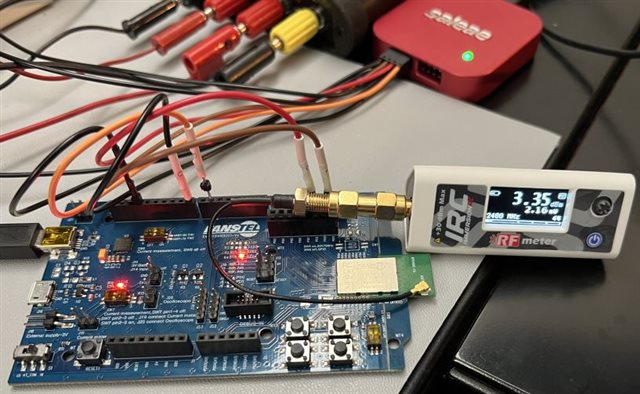My Goal: To measure a conductive Tx Power of +21 dBm using any NCS sample app running on Fanstel's BT840XE module, which includes the nRF52840 plus the +22 dBm Skyworks SKY66112 integrated FEM.
Problem Statement: So far the highest conductive Tx Power I have measured is 3.3 dBm using the attached NCS v2.3.0 peripheral_hr_coded sample, which has my modifications to control the Skyworks SKY66112 FEM in the nrf52840dk_nrf52840.overlay and overlay-nrf52840dk.conf files. However, I am able to measure +21 dBm using the attached BT840X_AT_PC_221028.hex file I received from Fanstel, which is based on the nRF5 SDK.
Please let me know if you see anything wrong with my nrf52840dk_nrf52840.overlay or overlay-nrf52840dk.conf files. I am fine with going back to previous NCS versions if necessary. However, I'm aware of Pull Request 10143 and DRGN-18568 being marked as fixed in NCS v2.3.0.
NOTE: I added the tx_power.c/h modules and gated them with #define ENABLE_TX_PWR_DYNAMIC_CONTROL in tx_power.h just so I could print out the TX Power value that actually gets initialized at run time after bt_enable() is called in main(). This requires CONFIG_BT_CTLR_TX_PWR_DYNAMIC_CONTROL=y at the top of the overlay-nrf52840dk.conf file.
Any and all ideas are welcome.
Thanks,
Starbuck




